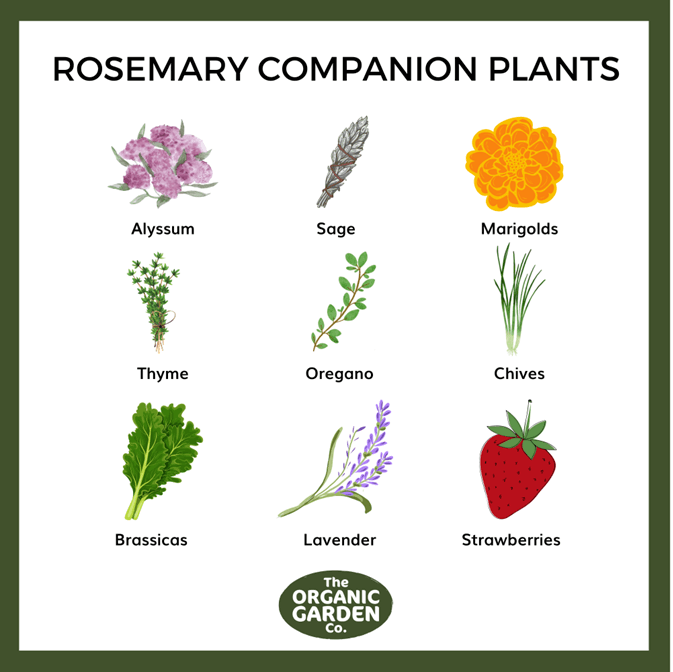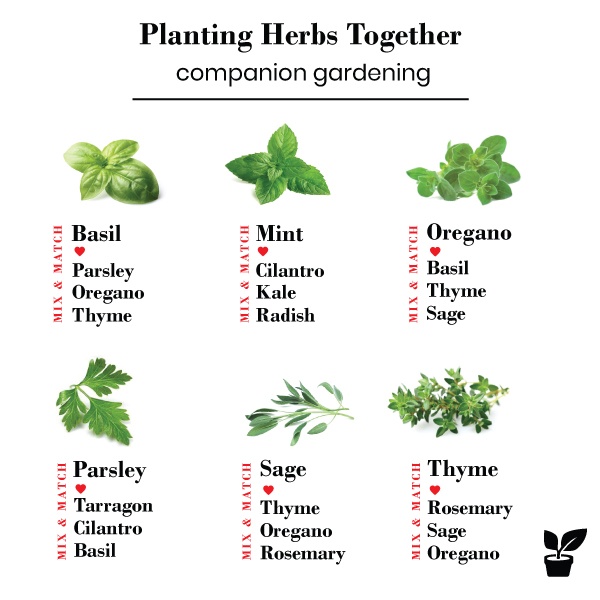Sage Companion Herbs: The Ultimate Guide To Planting And Growing Together
Sage Companion Herbs: The Ultimate Guide to Planting and Growing Together
Sage is a versatile herb that can be used in a variety of dishes, from savory stews to sweet desserts. It's also a beautiful plant, with its gray-green leaves and spikes of blue flowers.
If you're growing sage in your garden, you'll want to consider companion planting. Companion planting is the practice of planting certain plants together to benefit each other. Some plants can help to repel pests, attract beneficial insects, or improve the flavor of nearby plants.
Sage is a good companion plant for a variety of other herbs. Here are some of the best sage companion herbs:
- Brassicas: Sage repels cabbage moths, cabbage loopers, cabbage maggots, cabbage worms, and black flea beetles, all of which attack brassicas. So, planting sage near broccoli, cauliflower, Brussels sprouts, kale, and kohlrabi can help to protect these plants from pests.
- Carrots: Sage repels carrot rust flies. So, planting sage near carrots can help to keep these plants healthy and pest-free.
- Strawberries: Sage can help deter pests and enhance strawberry flavor. So, planting sage near strawberries can help to improve the quality of your strawberries and protect them from pests.
- Tomatoes: Sage repels flea beetles and attracts beneficial insects to tomato plants. So, planting sage near tomatoes can help to keep these plants healthy and pest-free.
- Rosemary: Sage is one of the few herbs that grow well with rosemary. These two herbs have similar growing requirements and can benefit each other by attracting beneficial insects and repelling pests.
In addition to these herbs, sage can also be planted near other plants that have similar growing requirements, such as lavender, thyme, and oregano. These plants all prefer full sun and well-drained soil.
When companion planting sage, it's important to keep in mind the size of the plants. Sage can grow quite tall, so it's best to plant it with other tall plants, such as tomatoes or broccoli. You'll also want to avoid planting sage near plants that prefer moist soil, such as chives or basil.
Companion planting is a great way to improve the health and productivity of your garden. By planting sage with the right companion plants, you can help to protect your plants from pests, attract beneficial insects, and improve the flavor of your crops.
Sage is a versatile herb that can be used in a variety of dishes, but it's also a great companion plant for other herbs and vegetables. When companion planted correctly, sage can help to repel pests, improve the flavor of other plants, and even attract beneficial insects.
Some of the best companion plants for sage include:
- Rosemary: Rosemary and sage are both Mediterranean herbs that enjoy similar growing conditions, so they make natural companions. Rosemary can help to repel pests, while sage can help to improve the flavor of rosemary.
- Thyme: Thyme and sage have similar pest-repelling properties, and they also both enjoy full sun and well-drained soil.
- Parsley: Parsley and sage can be planted together due to the same growing needs. They are also easy to maintain and look after.
- Carrots: Sage can help to repel carrot rust flies, which can wreak havoc on your harvest. Plant sage near your carrots and you'll be free from these pesky pests!
- Brassicas: Sage repels cabbage moths, cabbage loopers, cabbage maggots, cabbage worms, and black flea beetles, all of which attack brassicas.
If you're looking for more information about sage companion planting, I recommend visiting Gardenia Inspiration. This website has a wealth of information on the topic, including a list of the best companion plants for sage, as well as tips on how to plant and care for them.
FAQ of sage companion herbs
Question 1: What are some good companion plants for sage?
Answer: Sage is a versatile herb that can be paired with a variety of other plants. Some of the best companion plants for sage include:
- Brassicas: Sage repels cabbage moths, cabbage loopers, cabbage maggots, cabbage worms, and black flea beetles, all of which attack brassicas.
- Onions and garlic: These pungent herbs help to repel pests like aphids, spider mites, and whiteflies.
- Rosemary: Rosemary and sage both have strong scents that can deter pests. They can also be planted together to create a beautiful and fragrant herb garden.
- Thyme: Thyme and sage have similar growing requirements and can be planted together to save space. They also complement each other's flavors when used in cooking.
- Lavender: Lavender's sweet scent helps to attract pollinators, which can help to increase the yield of your other herbs.
Question 2: Why is sage a good companion plant?
Answer: Sage is a good companion plant for a number of reasons. It helps to protect from pests and diseases, improve growth and vigor, and in some cases, even flavor!
- Pest and disease protection: Sage has a strong scent that can deter a variety of pests, including cabbage moths, cabbage loopers, cabbage maggots, cabbage worms, and black flea beetles. It can also help to repel aphids, spider mites, and whiteflies.
- Growth and vigor: Sage can help to improve the growth and vigor of other plants. It is a nitrogen-fixing plant, which means that it can help to enrich the soil and provide other plants with the nutrients they need to thrive.
- Flavor: Sage can also improve the flavor of other herbs. When planted near rosemary, for example, sage can help to enhance rosemary's flavor.
Question 3: What are some herbs to avoid planting near sage?
Answer: There are a few herbs that should be avoided planting near sage. These include:
- Catnip: Catnip can stunt the growth of sage.
- Chives: Chives can compete with sage for water and nutrients.
- Parsley: Parsley can attract pests that also attack sage.
Question 4: How far apart should sage and its companion plants be planted?
Answer: The spacing requirements for sage and its companion plants will vary depending on the specific plants involved. However, as a general rule of thumb, you should space sage plants about 18 inches apart and its companion plants about 12 inches apart.
Question 5: What are some tips for planting sage with companion plants?
Answer: Here are a few tips for planting sage with companion plants:
- Choose the right location. Sage prefers full sun and well-drained soil.
- Prepare the soil. Before planting, amend the soil with compost or other organic matter.
- Plant the seeds or seedlings. Plant sage seeds about 1/2 inch deep and companion plant seeds about 1/4 inch deep.
- Water the plants regularly. Sage needs regular watering, especially during the first few weeks after planting.
- Fertilize the plants. Fertilize sage plants with a balanced fertilizer once a month during the growing season.
- Prune the plants. Prune sage plants in the spring to encourage new growth.
Image of sage companion herbs
- Chives. Chives are a good companion for sage because they repel pests like aphids and spider mites. They also help to improve the flavor of sage.

- Rosemary. Rosemary is another herb that repels pests, and it also helps to improve the flavor of sage. Rosemary and sage can be planted together in a herb garden or in a pot on your patio.

- Lavender. Lavender is a beautiful herb that also repels pests. It can be planted near sage to help keep away insects. Lavender and sage also have a complementary flavor, so they can be used together in cooking.

- Thyme. Thyme is a versatile herb that can be used in cooking, as a garnish, or in potpourris. It is also a good companion for sage, as it helps to repel pests and improve the flavor of sage.

- Oregano. Oregano is a popular herb that is often used in Italian cuisine. It is also a good companion for sage, as it helps to repel pests and improve the flavor of sage.

Post a Comment for "Sage Companion Herbs: The Ultimate Guide To Planting And Growing Together"